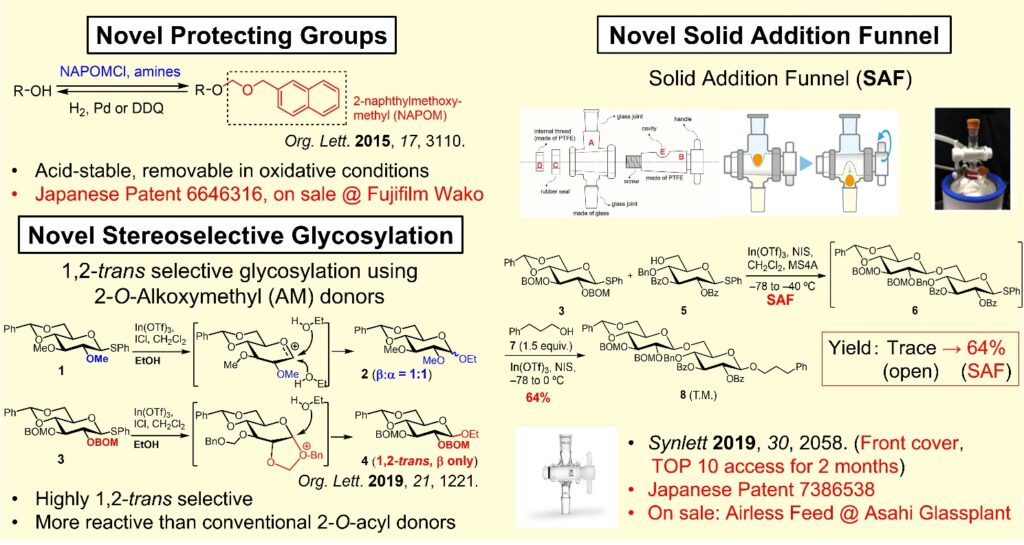Research
Biomembranes are not merely passive barriers separating internal organs from the external environment; they also play crucial physiological roles, such as signal transduction through membrane protein receptors. The study of biological membranes is becoming increasingly important, as many drugs target membrane proteins, and these membranes are implicated in the pathogenesis of various diseases, including Alzheimer’s disease and viral infections. However, biomembranes remain one of the most challenging subjects in life sciences due to their complex structure, which relies on weak interactions among lipids, proteins, and sugar chains. Our research takes a unique approach to studying biomembranes by integrating organic chemistry (chemical biology) and analytical chemistry, as illustrated in the figure below. The following is a brief overview of our work.

Lipid-Membrane Protein Interaction (Lipid Chemical Biology)
Although biological membranes contain a wide variety of lipids, such a wide variety of lipids is not necessary if only bilayer membranes are formed. Lipids are thought to regulate the function of membrane proteins (MPs) by interacting with them. Therefore, we have developed an original method to identify “lipid-specific MPs” and “MP-specific lipids”. We have also started research to apply these methods to drug discovery.
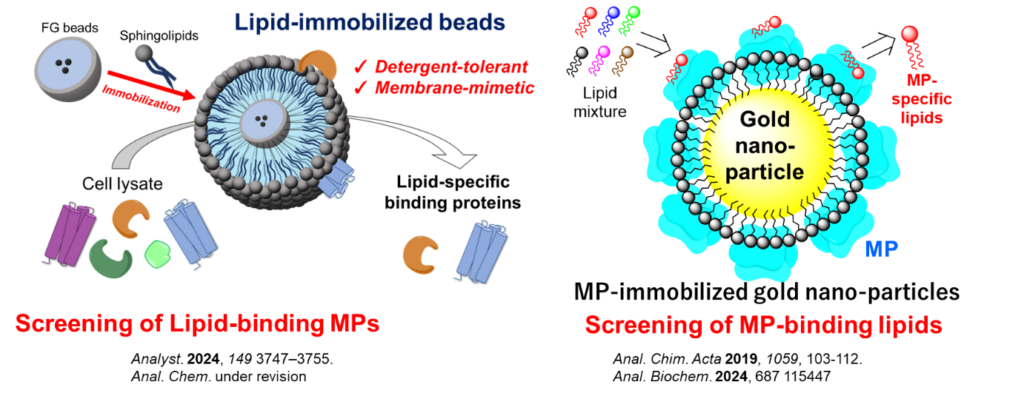
Analysis of Lipid Rafts
Lipid rafts are small, rigid membrane regions in biological membranes and are thought to be involved in signal transduction and viral infection. To elucidate the mechanism of lipid raft formation and clarify their significance, we are synthesizing fluorescent and stable isotope-labeled lipids and analyzing the behavior of lipid molecules in lipid rafts using confocal microscopy and solid-state NMR.
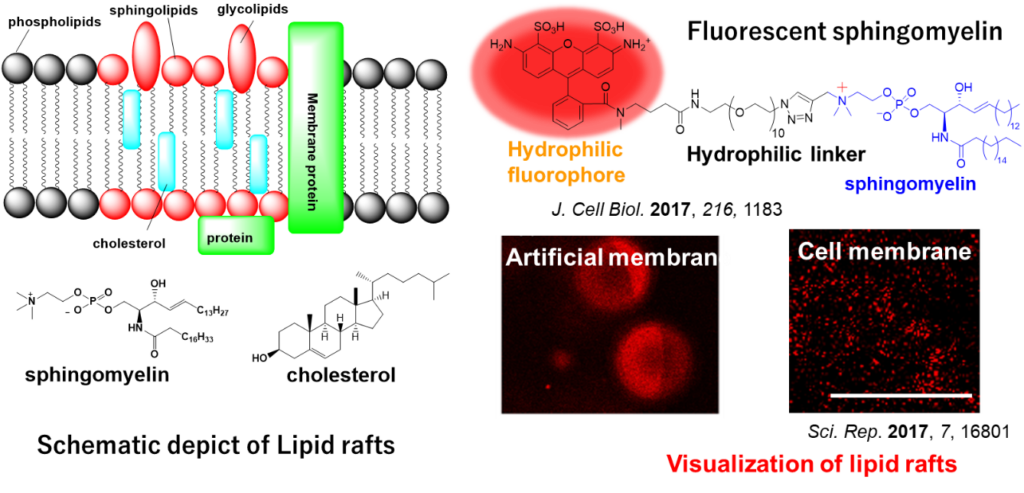
Mechanism of Actions of Anesthetics and Natural Products
Anesthetics induce their effects by interacting with lipid membranes or MPs, yet the precise mechanism of anesthesia remains unclear. To uncover this mechanism, we employ various analytical techniques. Recently, our research has yielded intriguing results suggesting that lipid rafts play a role in anesthetic action. Additionally, we are investigating the mechanisms of natural organic compounds that affect membranes and membrane proteins.
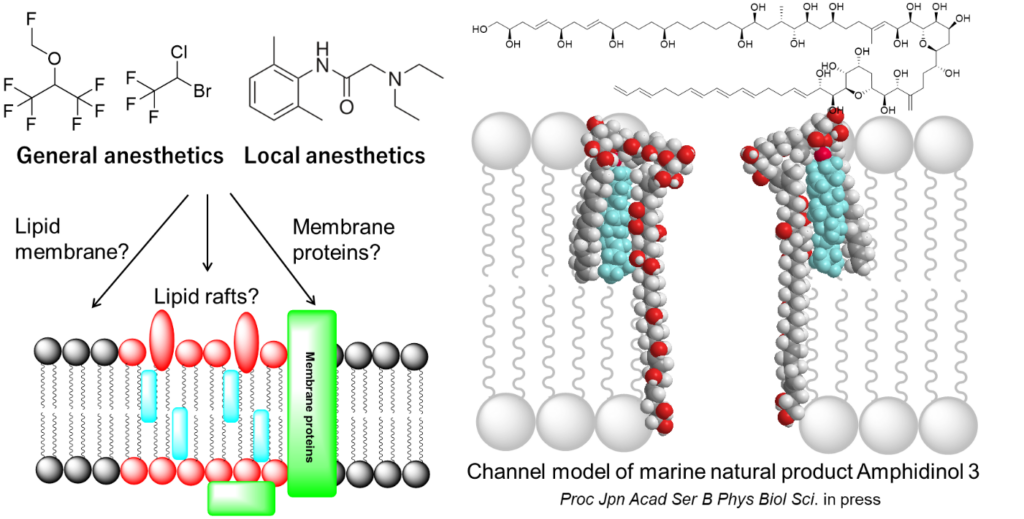
Ultra-sensitive Bioanalytical Chemistry: From Basic Developments to Medical/Pharmaceutical Applications (Kawai Team)
Recent advancements in medical and pharmaceutical technologies have accelerated the sophistication of diagnostics and treatments. However, there is a challenge in the lack of high-performance evaluation technologies capable of supporting these advancements. Kawai’s group is developing advanced bioanalytical technologies using capillary electrophoresis-mass spectrometry (CE-MS) and related techniques. By utilizing our unique concentration technology, we have developed a world’s most sensitive analytical system with zmol (10–21 mol) detection limit. Kawai’s team is conducting joint research with medical institutions and pharmaceutical companies. Our goals include the discovery of new biomarkers that cannot be detected by conventional methods, detailed pharmacokinetic analysis in drug delivery systems, and contributing to the development of new diagnostic methods and next-generation pharmaceuticals.
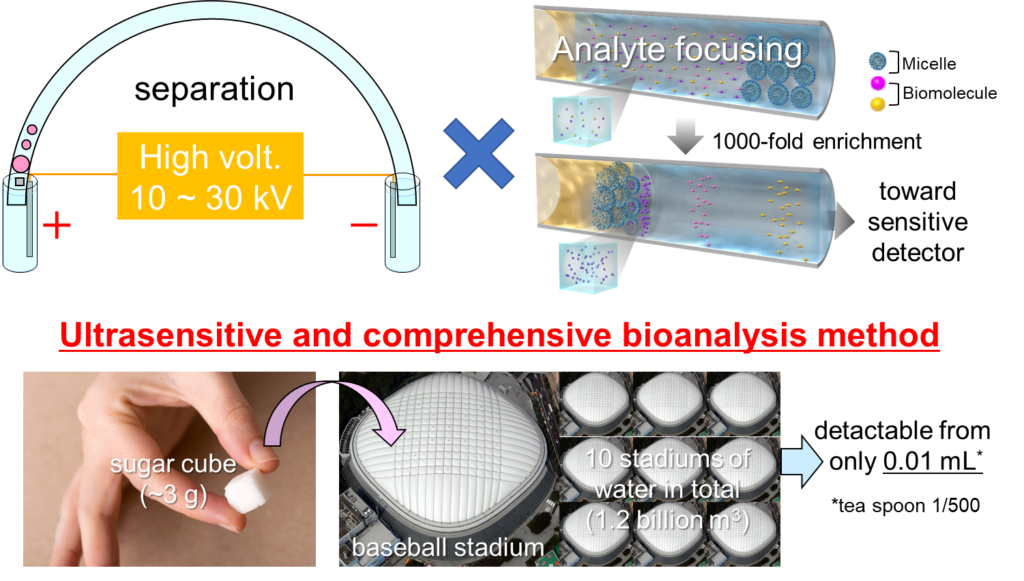
Development of Compounds, Methods, and Apparatus to Facilitate (Synthetic Organic) Chemistry (Torikai Team)
Synthetic organic chemistry has now been developed as it can provide almost all the necessary compounds (with more or less effort). On the other hand, the synthetic work and the result depend to a large extent on the skill and the intuition of the experimenters. For this reason, reproducibility has always been discussed on the assumption that the experimenters have them (although this is not very scientific). In addition, it takes a lot of time and effort for researchers to synthesize complex molecules.
With a strong desire to make waves in this situation, without focusing only on our own issues, we aim to develop chemical agents, methodologies, and apparatus to facilitate researchers in the field of synthetic (organic) chemistry (see figure below for details). Using biological active molecules or their models, we actively promote our work in a global research environment with our colleagues and students from abroad. Our eyes are not on the publication of research papers but also on patents and commercialization.
We are looking for students and researchers who are interested in improving their English communication, scientific writing, synthesis and presentation skills. If you are interested in these things, as well as carrying out lots of organic reactions and/or in developing something useful for people, JOIN US!
(Written by Kohei TORIKAI)
